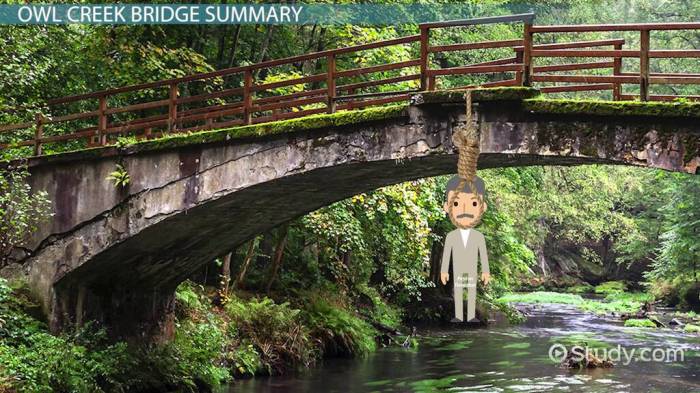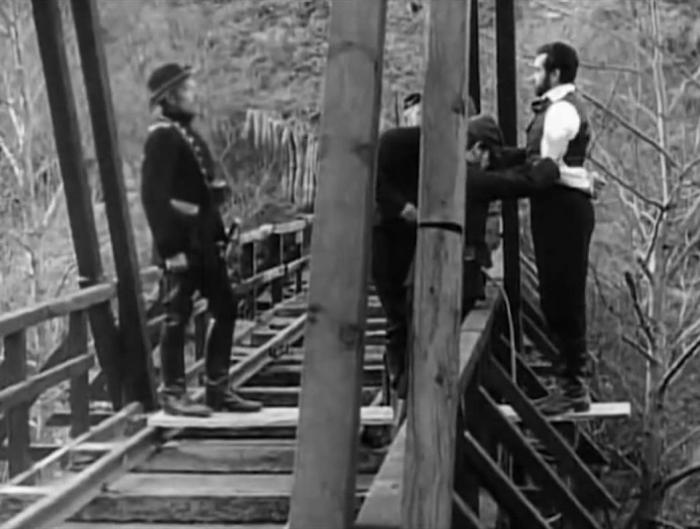An occurrence at owl creek bridge irony – “An Occurrence at Owl Creek Bridge” is a captivating tale that explores the irony of fate and the fragility of life. Ambrose Bierce’s masterful use of symbolism, foreshadowing, and sensory details immerses readers in the protagonist’s psychological turmoil and the inevitable march towards death.
The Irony of Fate and Coincidence

The story revolves around the central irony of Peyton Farquhar’s escape and subsequent recapture. Just as he believes he has outsmarted his captors and escaped certain death, a twist of fate leads to his recapture and execution. The timing of events is crucial in creating this ironic situation.
Farquhar’s escape is timed perfectly, but his recapture occurs at the most inopportune moment, just as he is about to reach safety.
Symbolism and Foreshadowing
The owl creek bridge itself is a powerful symbol in the story. It represents both hope and despair for Farquhar. Initially, it is a symbol of escape and freedom, but it ultimately becomes a symbol of his impending death. Bierce also uses foreshadowing throughout the story to hint at Farquhar’s eventual fate.
For example, the description of the bridge’s “hanging loop” and the mention of Farquhar’s “certain death” foreshadow his execution.
Sensory Details and Realism
Bierce’s use of sensory details enhances the reader’s immersion in the story. He vividly describes the sights, sounds, and smells of Farquhar’s escape, creating a sense of immediacy and realism. The detailed portrayal of Farquhar’s thoughts and emotions further adds to the story’s authenticity.
Psychological Complexity
Peyton Farquhar is a complex character, torn between his desire to live and his fear of death. Bierce explores the psychological turmoil experienced by Farquhar as he faces his imminent execution. Farquhar’s thoughts and emotions are vividly portrayed, providing insight into the human psyche under extreme circumstances.
Themes and Interpretations, An occurrence at owl creek bridge irony
The story explores several central themes, including the fragility of life and the inevitability of death. Bierce suggests that life can be extinguished in an instant, and that death can come at any time, even when we least expect it.
The story also raises questions about the nature of reality and the existence of an afterlife.
Historical Context
The story is set during the American Civil War, a time of great social and political upheaval. Bierce’s portrayal of the war’s brutality and its impact on individuals reflects the realities of the time. The story also sheds light on the social tensions and divisions that existed during the war.
Literary Devices
Bierce employs a variety of literary devices in the story, including imagery, metaphor, and symbolism. The vivid imagery creates a strong sense of atmosphere and immersion. The use of metaphor and symbolism adds depth and complexity to the story, allowing Bierce to explore themes and ideas beyond the literal events.
Questions Often Asked: An Occurrence At Owl Creek Bridge Irony
What is the central irony of the story?
The central irony lies in Peyton Farquhar’s belief that he has escaped execution, only to realize that he has been hanging from the bridge all along.
How does Bierce use symbolism to enhance the story’s impact?
The owl creek bridge symbolizes the divide between life and death, while the sensory details of Farquhar’s surroundings heighten the reader’s immersion in his subjective experience.


